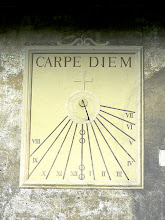SKY & TELESCOPE DIAGRAM

PHOTO : Sky & Telescope diagram June 30th 2012
•The Moon shines in the head stars of Scorpius
this evening, with Antares to its lower left.
Jupiter and Venus remain 5° apart low in the dawn all week,
with the Pleiades above them and Aldebaran just below.
The lineup is vertical as seen from near latitude 40° north
(New York, Denver), the latitude for which these scenes are
always drawn.
_____________________________________________
ONE SECOND MORE WILL BE
ADDED TONIGHT TO THE UTC
June 30th, 2012
************************
Saturday, June 30
-----------------
• Remember when Venus and Jupiter paired up spectacularly in the evening last March? Now they're at it again, but this time low in the dawn.
Best time: about an hour or so before your local sunrise (make sure the Daylight Saving Time box is checked if needed.)
Tonight June 30th : "ONE SECOND MORE"
• A leap second will be inserted into the world's civil time systems at the end of June 30th Coordinated Universal Time (the second before 8:00 p.m. Eastern Daylight Time). The minute 23:59 UTC will have 61 seconds, not 60, to adjust for a slight accumulated slowdown in Earth's spin. The last leap second was added to the world's clocks at the end of 2008. As the moment arrives, watch your favorite online time service and see if they get it right.
Sunday, July 1
--------------
•As soon as the stars come out, look high in the northwest for the Big Dipper hanging straight down by its handle. As night advances, the Dipper dips lower and to the right as if to scoop up water.
Monday, July 2
--------------
•Vega is the brightest star very high in the east after dark. Deneb is the brightest to its lower left. Altair is farther to Vega's lower right. These three form the big Summer Triangle.
Tuesday, July 3
---------------
•The full Moon shines in the southeast after dark. The bright star far to its upper left is Altair. Look just above Altair, by about a finger-width at arm's length, for fainter Tarazed (Gamma Aquilae). Tarazed, an orange giant, is much more luminous than Altair but is almost 20 times farther away (330 light-years, compared to Altair's distance of 17 light-years).
Wednesday, July 4
-----------------
•Watching fireworks this evening? As you're waiting for darkness to arrive, point out the two brightest stars of summer: Vega very high in the east, and Arcturus very high in the southwest.
Far below Arcturus are Saturn and, just under it, Spica. Off to their right and perhaps a bit lower is orangy little Mars.
•Earth is at aphelion, its farthest from the Sun for the year (just 1/30 farther than at perihelion in January).
Thursday, July 5
----------------
•The waning gibbous Moon rises around nightfall. The bright star high above it is Altair. Look a fist-width or more to Altair's left, and perhaps a bit lower, for the little constellation Delphinus, the leaping Dolphin. His nose points left.
Friday, July 6
--------------
•After nightfall at this time of year, the W-shaped constellation Cassiopeia has just passed its lowest point in the north and is beginning its long, slow climb in the north-northeast. The later in the night you look, the more altitude it gains. But the farther south you live, the lower it will be.
Saturday, July 7
----------------
•The red long-period variable star R Draconis should be at its maximum brightness of about magnitude 7.6 this week. Binoculars should show it. See the article and finder charts in the July Sky & Telescope, page 50.
==============================
.....


0 Comments:
Post a Comment
<< Home